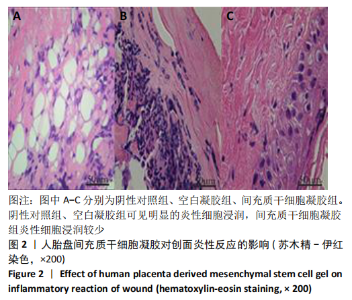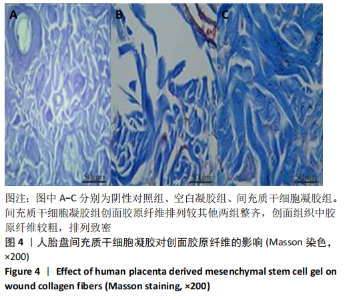[1] RYAN JL. Ionizing radiation: the good, the bad, and the ugly. J Invest Dermatol. 2012;132(3 Pt 2):985-993.
[2] KIM JH, KOLOZSVARY AJ, JENROW KA, et al. Mechanisms of radiation-induced skin injury and implications for future clinical trials. Int J Radiat Biol. 2013;89(5):311-318.
[3] STONE HB, COLEMAN CN, ANSCHER MS, et al. Effects of radiation on normal tissue: consequences and mechanisms. Lancet Oncol. 2003;4(9):529-536.
[4] MÜLLER K, MEINEKE V. Radiation-induced alterations in cytokine production by skin cells. Exp Hematol. 2007;35(4 Suppl 1):96-104.
[5] 张倩玉,许斌,张惠博,等. SD大鼠急性放射性皮炎模型的建立[J]. 现代生物医学进展,2018,18(8):1419-1424.
[6] DOUGLAS BG, FOWLER JF. The effect of multiple small doses of X rays on skin reactions in the mouse and a basic interpretation. 1976. Radiat Res. 2012;178(2):AV125-138.
[7] HOELLER U, TRIBIUS S, KUHLMEY A, et al. Increasing the rate of late toxicity by changing the score? A comparison of RTOG/EORTC and LENT/SOMA scores. Int J Radiat Oncol Biol Phys. 2003;55(4):1013-1018.
[8] RANDALL K, COGGLE JE. Expression of transforming growth factor-beta 1 in mouse skin during the acute phase of radiation damage. Int J Radiat Biol. 1995;68(3):301-309.
[9] SORIANO JL, CALPENA AC, SOUTO EB, et al. Therapy for prevention and treatment of skin ionizing radiation damage: a review. Int J Radiat Biol. 2019;95(5):537-553.
[10] 朱琳,李薇薇,刘志凯.人血管基质片段联合脂肪干细胞促进裸鼠放射性皮肤损伤的愈合[J].山东大学学报(医学版),2017,55(9):66-72.
[11] ZHAO N, YUE Z, CUI J, et al. IGF-1C domain-modified hydrogel enhances therapeutic potential of mesenchymal stem cells for hindlimb ischemia. Stem Cell Res Ther. 2019;10(1):129.
[12] MERAVIGLIA V, VECELLIO M, GRASSELLI A, et al. Human chorionic villus mesenchymal stromal cells reveal strong endothelial conversion properties. Differentiation. 2012;83(5):260-270.
[13] TAO H, HAN Z, HAN ZC, et al. Proangiogenic Features of Mesenchymal Stem Cells and Their Therapeutic Applications. Stem Cells Int. 2016;2016:1314709.
[14] GERHARD-HERMAN MD, GORNIK HL, BARRETT C, et al. 2016 AHA/ACC Guideline on the Management of Patients With Lower Extremity Peripheral Artery Disease: Executive Summary: A Report of the American College of Cardiology/American Heart Association Task Force on Clinical Practice Guidelines. Circulation. 2017;135(12):e686-e725.
[15] ZHANG K, ZHAO X, CHEN X, et al. Enhanced Therapeutic Effects of Mesenchymal Stem Cell-Derived Exosomes with an Injectable Hydrogel for Hindlimb Ischemia Treatment. ACS Appl Mater Interfaces. 2018;10(36): 30081-30091.
[16] 韩忠朝,王伟强. 间充质干细胞的生物学特性及临床应用[J].中国科学:生命科学,2017,47(12):1404-1409.
[17] DU WJ, CHI Y, YANG ZX, et al. Heterogeneity of proangiogenic features in mesenchymal stem cells derived from bone marrow, adipose tissue, umbilical cord, and placenta. Stem Cell Res Ther. 2016;7(1):163.
[18] RASULOV MF, VASILCHENKOV AV, ONISHCHENKO NA, et al. First experience of the use bone marrow mesenchymal stem cells for the treatment of a patient with deep skin burns. Bull Exp Biol Med. 2005;139(1):141-144.
[19] LIANG L, LI Z, MA T, et al. Transplantation of Human Placenta-Derived Mesenchymal Stem Cells Alleviates Critical Limb Ischemia in Diabetic Nude Rats. Cell Transplant. 2017;26(1):45-61.
[20] 韩忠朝,耿洁,梁璐. 一种用于创面修复的干细胞制剂及其制备方法:中国, CN 201210133427 [P]. 2012-09-19.
[21] DU W, LI X, CHI Y, et al. VCAM-1+ placenta chorionic villi-derived mesenchymal stem cells display potent pro-angiogenic activity. Stem Cell Res Ther. 2016;7:49.
[22] ZENG X, TANG Y, HU K, et al. Three-week topical treatment with placenta-derived mesenchymal stem cells hydrogel in a patient with diabetic foot ulcer: A case report. Medicine (Baltimore). 2017;96(51):e9212.
|











